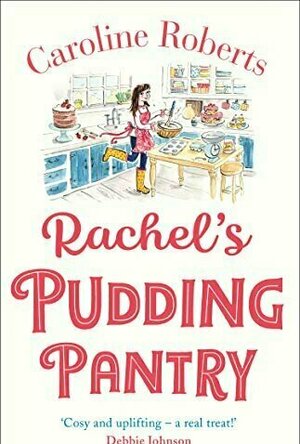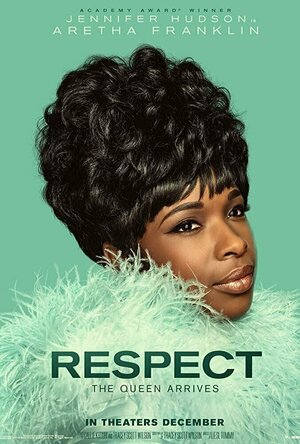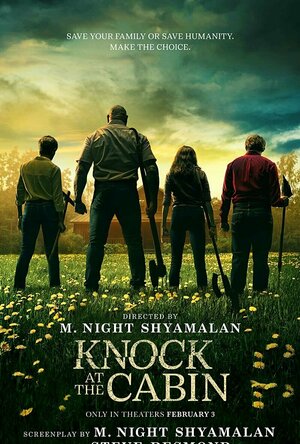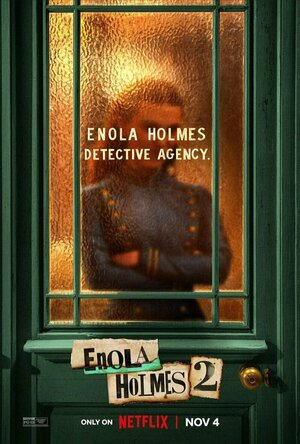
Piano Partner 2
Music
App
The Piano Partner 2 app provides a friendly, interactive way to help you learn and enjoy music with...
Ivana A. | Diary of Difference (1171 KP) rated Rachel's Pudding Pantry in Books
Oct 2, 2020
Rachel’s Pudding Pantry is a story about Rachel, who is a farmer in the modern world, living with her mum Jill and her little daughter Maisy. Rachel and her family has been dealing with a lot of grief in the last couple of years, and are struggling financially to keep the farm running.
The one thing that glues this family together, and keeps them happy is the baking and the making of lovely sweet puddings. They bake all day, especially grandma Jill, and they are the perfect example of what a family should look like – full with joy, love and laughter.
I loved the personality Rachel has;
She always puts her family in the first place, cares about her daughter and mum so much. Everything she is doing, she is doing for them, and she is always positive minded. It was such a refreshing moment for me to find such character.
Rachel and her mum are dealing with grief, losing a person in their family that meant a lot to them. This moment of sadness can be felt throughout the book, and I loved it. It shows that grief is a constant battle – it is not easy to lose someone you love, and you don’t get over it very easily. Years could pass, and you will still have the emptiness in your heart. I felt this on my skin, when I lost my grandfather in January. Even after three months, I still think of him every single day, and hope that he is looking over me and is proud of who I have become.
I was also very positively pleased with the other supportive characters surrounding Rachel’s story. Tom was the perfect neighbor – the one you always call for help and will always help you when you need him. He is always caring and trustworthy, and sometimes, I felt awkward when Rachel always came to him for help. Knowing myself, I would be so embarrassed to keep asking for help.
Then we have her best-friend Eve. She was my superhero, and a friend anyone would wish for. She was always supportive, always there for Rachel with her never-ending love. It is a priceless relationship these two ladies have, and I couldn’t help but be a massive fan of them.
The only thing that kept bothering me throughout the book, and is not that big of a deal anyways, was the fact that despite their financial struggles, Jill kept baking for like thirty people every single day (this is before they started the new business). If that was me, I wouldn’t bake that often. I guess it was a fact that just stuck with me for a while.
Even though it is not my usual read, I honestly really enjoyed this book. I am seriously considering giving this genre more time, and reading more books similar to this.
It was a quick, pleasurable read. It always made me feel happy and content, and eager to go in the kitchen and bake some sweets. Because I am a lazy one, I just bought sweets and ate them instead. Tell you what – that also works quite fine!
Ivana A. | Diary of Difference (1171 KP) rated Princess in Practice (Rosewood Chronicles #2) in Books
Oct 2, 2020
''Nothing in life is to be feared; it is only to be understood. Now is the time to understand more, so that we may fear less.''
The story continues where it left off, with Ellie, Lottie and Jamie settling after the adventurous ending and getting ready for their second year in Rosewood. With the new school year starting, their enemies are on the rise again, plotting their new actions, and Lottie and Jamie are more than ready to protect their princess.
But as always, things are not as easy as they seem, and they never suspect that danger will be so close to them, now more than ever.
I loved that Lottie has her moment with her old best friend, when she visits the hometown, and tells him all about the princess world. It was soothing to know that she still cares about him, and always will, despite their lives being very different now.
Throughout the book, we don't see any romantic scenes, but we do have a lot of subtle talks about them. I really loved the romance between Anastacia and Saskia. Maybe not the romance itself actually, because to be honest, as much as I love the author, she doesn't have a skill set for writing romance. What I did love, was the dedication of the couple to stay together and what Saskia would do and sacrifice, just for the person she loves.
I was very upset with the author trying so hard to make Lottie and Ellie a couple. Yes, we know lesbian relationships are against the rules in the kingdom and Ellie's father would be furious to find out. But Lottie had such a nice slow-burn romance going with Jamie, getting to know him and all. They even reminded me of Dimitri and Rose from Vampire Academy. They have a thing, and the author ruined it with trying to convince me Lottie likes girls. Well, I am not convinced. I already have my favourite girl couple, and it's not Lottie and Ellie.
Princess in Practice was a better-written book than Undercover Princess in my opinion.
If I had to choose though, I would still prefer the first book, because of the whole set up. The friendship stories were better and even the villains were better in the previous book.
The villains we had in this book were plain, without a character, and I simply did not care about any of them. Even that last chapter, with the mysterious leader that stands behind everything, all I could feel was - MEH!
When it comes to the friendship, and the wider team that helps these three main characters, we didn't really get to know them much more than we did from the previous book. My favourite was and will stay Raphael, who always makes me laugh.
''What? Why don't I get to be a plus-one?'' Raphael maned, putting.
''Because, Raphael,'' Anastacia mocked, ''you're not a trained bodyguards, nor are you a princess.''
To conclude, I loved reading Princess in Practice. It had a nice overall story and it was very easy to read. I will definitely be waiting for the third book to come out and will be desperate to read it! A great book during the summer period for sure. If you love princesses - that is :)
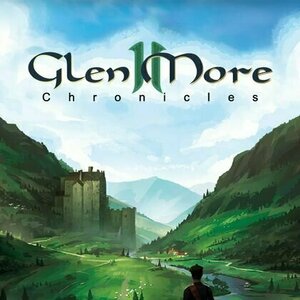
Glen More II: Chronicles
Tabletop Game
Glen More II: Chronicles is a sequel to Glen More, expanding the gameplay substantially compared to...

CrossFire: Legends
Games
App
Là một tựa game bắn súng góc nhìn thứ nhất (First person shooter-FPS) được đông...

Corkz - Wine Reviews, Database, Cellar Management
Food & Drink and Travel
App
One of TIME Magazine’s top 50 apps “Corkz if the best all-purpose wine app available for...

Tandem - Language Exchange
Education and Travel
App
Speak any language on Tandem - the app that gets you talking in foreign languages. Tandem helps you...
Bob Mann (459 KP) rated Respect (2021) in Movies
Oct 14, 2021
Plot Summary:
‘Re’ is a 10-year old growing up in relative middle-class affluence in Birmingham, Alabama with her high-profile preacher father C.L. Franklin (Forest Whitaker). She is blessed with a wonderful singing voice. We follow her career, as Aretha Franklin (Jennifer Hudson), through her struggles with controlling men and alcohol. This is against the backdrop of supporting the civil rights movement led by Martin Luther King (Gilbert Glenn Brown).
“Respect” Review: Positives:
Jennifer Hudson gives a tremendous performance as Franklin, delivering both the vocals and the acting admirably. (Apparently, the lady herself, before she died in August 2018, named Hudson as the best person to play her.)
Coming out of this movie, you have to admire Aretha Franklin’s legacy. Although there are moments when her ‘demons’ got the better of her (and the movie is unafraid to paint her in a negative light for these) she led a tumultuous life and yet was still a strong force for both feminism and equality. I think the movie highlights that admirably. “Have you lost your mind?” her father (Forest Whitaker) asks. “Maybe…. maybe I’ve found it.” she replies.
I loved the clip during the end titles (at a Carole King concert and in front of the Obamas) of Franklin well into her 70’s belting out “Natural Woman”. Classy stuff.
Negatives:
It’s long. Very long. Approaching Bond long.
There’s a curious ‘cookie-cutter-ness’ to these biopics of classic female singers (controlling and abusive men; alcohol/drug abuse; prejudice through sex/race; etc). (Would they even have emanated the same level of soul without all the grief? Perhaps not.) The similarities lead you to naturally compare this movie with “The US vs Billie Holiday“. The Billie Holiday story felt like it had a lot more grit and angst in it, making it, for me at least, more memorable. The script for “Respect” – although still rather episodic – flows better. Whilst still great, Hudson’s performance (an Oscar nomination perhaps?) doesn’t come close to the Oscar-nominated stellar job done by Andra Day.
I didn’t like how the script introduced us to its characters. For example, Ted White (Marlon Wayans) is introduced at a church barbeque. He’s painted as a disreputable character, but why? And you have no idea if he is supposed to be a famous singer, a songwriter, a promoter, or a producer (as in fact he is). As another example, Kelvin Hair plays Sam Cooke in the movie, but – unless I missed it – this doesn’t seem to be highlighted in the script.
Summary Thoughts on “Respect”
“Respect” is the feature debut for female director Liesl Tommy. And it’s certainly an ambitious target for a first-timer to shoot at, so ‘Respect’ for that! And it comes across as a solid and enjoyable biopic, not least to remind yourself of some of the classic tunes that Aretha Franklin belted out. At 145 minutes though, it takes its time telling its story, and I think a tighter, shorter film would have worked better.
Did I enjoy it though? Yes, I did. But it’s worth pointing out that the illustrious Mrs Movie Man – who normally begrudges every minute over 90 minutes in a movie – really loved this one.
BankofMarquis (1832 KP) rated Knock at the cabin (2023) in Movies
Mar 31, 2023
KNOCK AT THE CABIN opens with an interesting premise – a couple and their daughter are at a remote cabin (with, conveniently enough, no cell phone service) when 4 strangers show up and declare that the world will end unless one of the 3 is sacrificed to stop the upcoming carnage.
It’s a good idea that has, inherently, some moral complications and one quickly jumps onto the side of the 3 in the cabin, writing off the 4 strangers as insane, but as events transpire – and the seeming sincerity of the 4 strangers comes into focus – one starts to have doubts.
Shyamalan does a professional job of weaving the tension into the first ¾ of this film as the 3 in the cabin are trying to make logical sense out of the predicament they are in while the 4 strangers become more and more desperate in their attempts to convince the trio in the cabin to sacrifice one of themselves. This is a director sure of himself and slowly, strongly leading the audience to the ending.
He helps himself by casting some VERY good performers in a film that, basically, takes place in one room. Jonathan Groff (Broadway’s HAMILTON) and Ben Aldridge (Thomas Wayne in the TV Series PENNYWORTH) are convincing and believable as the besieged couple, while David Bautista (Drax in the GUARDIANS OF THE GALAXY films), Rupert Grint (yes, Ron Weasley from the HARRY POTTER films) and newcomer (at least to me) Abby Quinn (RADIUM GIRLS) counterbalance these two nicely. Special notice needs to be made of the 4th person knocking on the cabin, Nikki Amuka-Bird (THE OUTFIT) and youngster Kristen Cui – who both bring much needed pathos and humanity to a film that could have turned into an out-of-control testosterone fest, but ended up being grounded by these two.
So, all of this adds up to a very good time at the movie theater – providing that Shyamalan can stick the landing of this piece.
Alas, he does not. And he does something worse – he pulls his punches as the outcome of one of the characters is changed from what happens to them in the 2018 novel THE CABIN AT THE END OF THE WORLD by Paul Tremblay. Shyamalan could have delivered a gut punch to the audience to accentuate the past bit of time spent with these characters (kind of like what Frank Darabont did with THE MIST) but instead decides to play it safe and lands squarely in the middle of mediocrity-land.
Your enjoyment of this film will depend on how much you like how this film ends. For the BankofMarquis, it was ¾ of a good film with a bad ending.
Letter Grade: B-
6 stars (out of 10) and you can take that to the Bank(ofMarquis)
BankofMarquis (1832 KP) rated Enola Holmes 2 (2022) in Movies
Nov 14, 2022
And, in ENOLA HOLMES 2, we get exactly that. A very entertaining way to spend a few hours with characters that continue to be a joy to while away the time - and a mystery - with.
Starring Millie Bobby Brown (11 in STRANGER THINGS), Enola Holmes 2 follows the titular character as she has opened her own, competing, Detective Agency. But, as these sorts of things go, her case ends up intertwining with her famous older sibling’s case, so we really get “Holmes and Holmes”.
And that is just fine with me for Brown and Henry Cavill (who plays Sherlock Holmes and who has previously played the MAN OF STEEL) make a winning pair, working off each other with just the right tone of mystery and fun and they look like they are having a good time figuring out the central mystery of this story.
Credit for this must go to Director Harry Bradbeer (Director of the first ENOLA HOLMES film) who came up with this story based on Nancy Springer’s characters (she wrote the ENOLA HOLMES books) and to which Jack Thorne bases his screenplay on. Bradbeer seems to understand these characters and the tone of this film. He makes just the right balance between mystery and fun - keeping the proceedings moving along at a jaunty pace, so the audience can enjoy the ride, but aren’t too jostled around by it.
Brown and Cavill fit right into this tone as does the always wonderful Helena Bonham Carter (she of many films, let’s go with A ROOM WITH A VIEW) as the mother of both of these two Detectives. The sturdy David Thewlis (Professor Lupine in the HARRY POTTER films) brings along his professionalism, comedic timing and mysteriousness as Police Inspector Grail while Louis Partridge returns as the handsome almost-love interest of Enola, Lord Tewkesbury.
Special notice needs to be made of Costumer Consolata Boyle (THE QUEEN) she populates this film with the prerequisite muted colors of 19th Century London (lots of Grey, Black and Dark Blue) but she manages to give Enola just enough of a flair in her costumes. For example, the blue of her skirt is just brighter enough than those around her to punch her up, but it is not so much brighter that it is obviously making her stick out. It is a smart, subtle touch to a very pleasing film to look at.
And that is, really, the bottom line of this movie. It is a very pleasant movie, with a mystery that is interesting enough to keep a person hooked, but not overly complex or dingy as to turn people off.
A good family film - and that is a compliment - the type of film that can be enjoyed by young and old alike.
Letter Grade: B+
7 1/2 (out of 10) stars
And you can take that to the Bank (ofMarquis)
